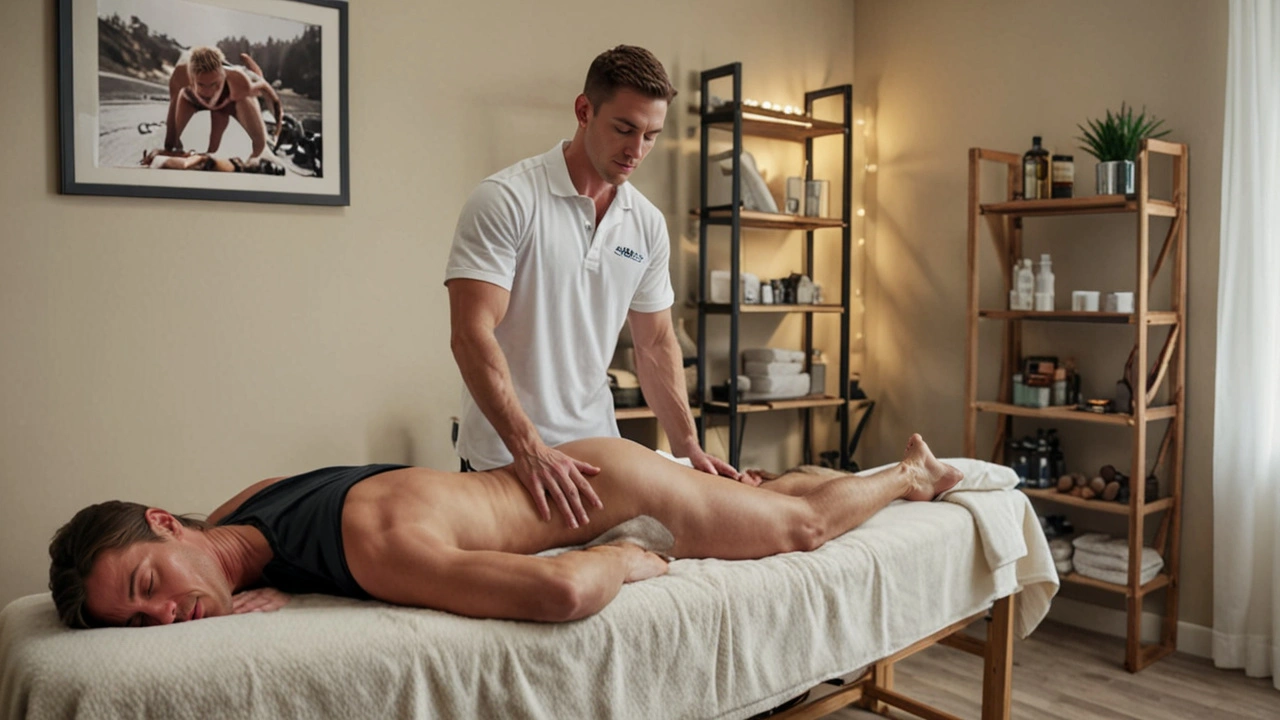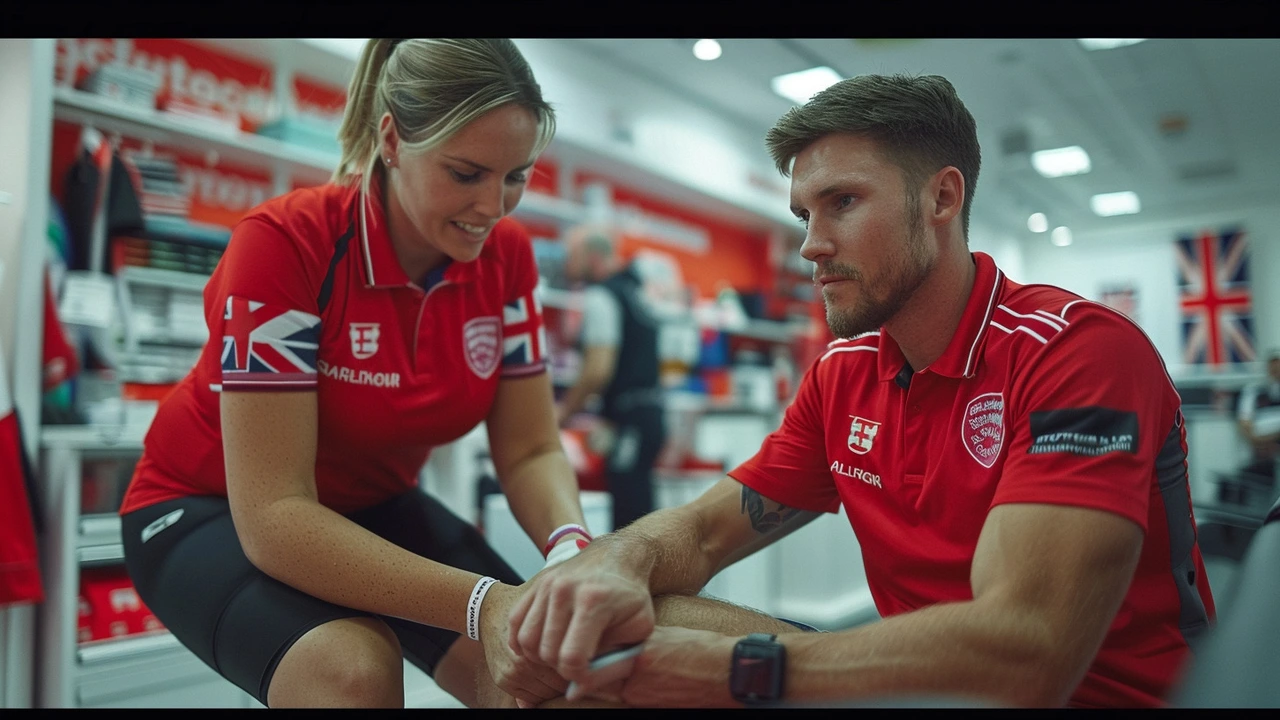Athletic Performance: Want to get stronger, faster, and stay injury-free?
Start with consistent habits that actually move the needle. Think of performance as three things: training, recovery, and daily choices. Nail each one and you see real gains.
Train Smarter
Focus on form, not ego. Short, intense sessions beat long, sloppy workouts for most goals. Mix strength work, speed drills, and movement practice. Use progressive overload—add weight, reps, or quality each week. Track what you do. Small consistent increases add up.
Recover Right
Recovery wins more battles than people think. Sleep first: aim for solid 7–9 hours most nights. After workouts, prioritize hydration, protein, and easy movement to flush soreness. Sports massage and targeted soft-tissue work speed recovery, reduce tightness, and improve range of motion. Use it around key sessions to stay consistent.
Fuel the engine. Nutrition shapes how you train and recover. Prioritize a balance of carbs for workouts, protein for repair, and whole foods for vitamins and fiber. Post-workout health juices or shakes that mix carbs and protein help with faster muscle repair and rehydration. Don’t ignore gut health; a well-fed microbiome can boost energy, reduce inflammation, and support recovery.
Plan for the long game. Set clear, short-term goals around technique, speed, or strength. Break them into weekly steps and check progress. Avoid always chasing max lifts or all-out sessions. Consistent practice beats random extremes.
Use self-regulation tools. Breathing, mindfulness, and biofeedback help you control stress, sleep better, and improve focus. Better recovery and sharper focus mean more productive training time.
Check movement quality. Mobility, ankle, hip, and shoulder control matter. Correct weak links early to avoid chronic problems. Short targeted drills three times a week fix a lot.
Prep for competition like you train. Taper volume, sharpen intensity, and protect sleep and food choices in the week before. Practice race day routines so nothing surprises you.
Track recovery with simple markers: resting heart rate, sleep quality, and soreness. Adjust load based on these signals rather than ego or habit.
Small wins add up. Better sleep, focused sessions, proper nutrition, and smart recovery create reliable progress. Use a few tools consistently: sports massage, gut-friendly food, targeted mobility, and a simple stress routine. That combo keeps you training more often and performing better.
Want practical plans? Start by picking one habit this week: extra hour of sleep, a weekly mobility session, or a post-workout protein drink. Small changes stack into bigger gains. Keep it simple. Be consistent. Enjoy the process.
If you feel stuck, get a short consult with a coach or therapist who focuses on sports recovery. A quick video review or a single sports massage plan can reveal habits wasting your time. Keep a simple log of sessions, sleep, and food; patterns show up fast. Adjust one thing at a time so you know what works.
Remember, training less but smarter often beats training more with poor habits. Build the basics, then add intensity. Your body will thank you with better races, lifts, and fewer setbacks.
Start.

Boost Your Fitness Routine with Sports Massage: Tips, Benefits, & Recovery
Learn how sports massage can help you work out smarter, recover faster, and avoid injuries. Get helpful tips, facts, and expert advice for your fitness journey.
Read More
Sports Massage: Incredible Ways It Boosts Performance
Sports massage isn't just a luxury for elite athletes; it's a proven tool for anyone looking to push their limits and avoid injuries. This article breaks down how sports massage works, why it's so effective, and what every athlete should know. Find out how smart use of massage can shorten recovery time, boost flexibility, and even improve mental focus. You'll get practical tips you can use right away, whether you're a weekend runner or a pro. Don’t miss real examples and advice for making the most of every session.
Read More
Sports Massage: The Key to Preventing Injuries and Staying Game-Ready
Sports massage isn’t just for pro athletes—it's a crucial tool for anyone who wants to stay active and avoid injuries. This article breaks down what sports massage really is, explains how it prevents injuries, and shares practical tips for making the most out of every session. It covers when and how often you should get a massage, and what to look for in a qualified therapist. You’ll get science-backed facts, real-life tips, and some things even weekend warriors might not know. Learn how to use sports massage to keep your body performing at its best.
Read More
Unlocking the Benefits of Sports Massage for Quick Recovery
Sports massage can be a game-changer for athletes and fitness enthusiasts looking to speed up recovery and enhance their performance. Discover how specific techniques help alleviate muscle soreness, improve circulation, and prevent injuries. Learn about its benefits and how to incorporate it into your fitness routine.
Read More
The Essential Guide to Sports Massage: Enhancing Athletic Performance and Recovery
Explore the vital role of sports massage in athletic performance and overall body maintenance. This detailed guide covers everything from the benefits of integrating sports massage into your routine, to specific techniques that aid in recovery and injury prevention. Learn how a proper sports massage can improve flexibility, reduce pain, and pave the way for optimal performance. Whether you're an athlete or someone looking to enhance their physical wellbeing, this article provides useful insights and practical tips on making sports massage a valuable part of your health regimen.
Read More
Why Sports Massage is the Best Recovery Tool
Well, darling readers, let's delve into the world of sports massage, the magical muscle remedy we all need! Now, I'm no athlete, but trust me when I say, this is your new best friend for recovery. It's like having an undo button for all those body aches and pains from your workouts. Imagine a reset button for your muscles, but it's not a button, it's a massage! It's the ultimate relaxation station that not only makes you feel like you're floating on a cloud, but also speeds up your recovery time. I mean, who doesn't love a good pampering while also getting fit? Win-win!
Read More